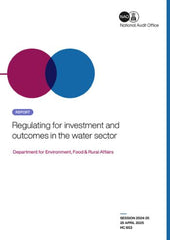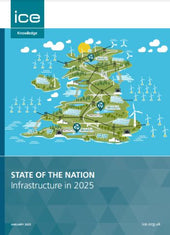
Elevating Government to Market Standards: A Review of "The Third Pillar"
Rebalancing Society's Foundations
In "The Third Pillar: How Markets and the State Leave the Community Behind," former IMF Chief Economist Raghuram Rajan presents a compelling framework for understanding the precarious balance of modern society. The book's central thesis is elegant yet profound: society rests on three pillars—the state, markets, and community—and when these fall out of balance, the consequences ripple through every aspect of our lives.
Rajan writes in his conclusion that when imbalances arise, the temptation is to bring all pillars down to the lowest common denominator. But as he wisely observes, this "will bring back equilibrium, but at a much lower level for society." The solution is not to diminish what works, but to elevate what lags behind.
The State's Efficiency Problem
While Rajan's book examines all three pillars, the state's struggle to match the efficiency of modern markets deserves particular attention. The ICT revolution and globalization have turbocharged market efficiency, creating corporations that can respond to price signals in milliseconds, optimize supply chains across continents, and deliver unprecedented value to consumers. Meanwhile, government institutions often operate with systems and mindsets designed for a different era.
This isn't merely an academic concern. The efficiency gap between markets and the state has real consequences: crumbling infrastructure, slow permit processes, outdated regulations, and public services that frustrate citizens who have grown accustomed to the responsiveness of private sector alternatives.
As Rajan notes in the epilogue, recent elections across the developed world reveal deep dissatisfaction with the current state of affairs. When people interact with seamless digital marketplaces for everything from transportation to food delivery, and then encounter Byzantine bureaucratic processes for essential services, the contrast is stark and the frustration justified.
A Practical Path Forward: Performance Systems in Water Operations

The good news is that elevating government efficiency to market standards isn't a theoretical exercise—practical models exist. Water operations provide an excellent case study for how performance systems can transform government service delivery.
The Water Sector Challenge
Water utilities represent a critical government function that touches every citizen daily. Yet many water systems operate with significant inefficiencies: high rates of "non-revenue water" (water lost to leaks), aging infrastructure, reactive rather than predictive maintenance, and limited accountability for performance outcomes.
Implementing Performance-Based Systems
A modern performance system for water operations would include several key components:
1. Real-Time Monitoring and Data Analytics
Installing smart meters and sensors throughout the water distribution network enables continuous monitoring of flow rates, pressure levels, and water quality. Advanced analytics can detect anomalies, predict failures before they occur, and optimize system operations in real-time—bringing government operations closer to the data-driven decision making that characterizes efficient markets.
2. Clear Performance Metrics
Establishing measurable key performance indicators (KPIs) creates accountability:
• Non-revenue water percentage
• Response time to service disruptions
• Water quality compliance rates
• Customer satisfaction scores
• Energy efficiency per unit of water delivered
• Cost per cubic meter of water treated and distributed
3. Transparent Performance Reporting
Publishing performance data openly serves multiple purposes. It creates accountability to citizens, enables benchmarking against other utilities, and builds public trust. When Singapore's Public Utilities Board publishes detailed performance data, it demonstrates confidence in its operations and invites public scrutiny—much like how market competition drives transparency.
4. Performance-Based Compensation
Linking a portion of employee compensation to achievement of performance targets aligns individual incentives with organizational goals. This doesn't mean importing problematic aspects of market behavior, but rather adopting the motivational mechanisms that drive excellence.
5. Predictive Maintenance Programs
Using data analytics and machine learning to predict equipment failures and optimize maintenance schedules prevents costly emergencies and extends asset life. This proactive approach mirrors how successful companies manage their capital assets.
6. Customer-Centric Service Design
Implementing mobile apps for service requests, real-time outage notifications, and usage monitoring brings government service delivery in line with citizen expectations shaped by private sector experiences.
The Results
Cities that have implemented comprehensive performance management systems in water operations have seen remarkable improvements:
Phnom Penh, Cambodia reduced non-revenue water from 60% to under 10% through systematic performance management
Singapore maintains one of the world's most efficient water systems with minimal losses and industry-leading operational metrics
Copenhagen, Denmark uses smart systems to reduce water consumption while maintaining excellent service quality
These aren't just efficiency gains—they represent government rising to meet the standards of modern markets while maintaining its essential public service mission.
Beyond Water: A Template for Government Renewal
The performance system approach in water operations offers a template that can be adapted across government functions:
Transportation: Real-time traffic management, predictive road maintenance, and data-driven infrastructure investment
Healthcare: Evidence-based protocols, outcome tracking, and resource optimization
Education: Student outcome metrics, teacher effectiveness measurement, and data-informed curriculum development
Public Safety: Predictive policing models (with appropriate safeguards), response time optimization, and community outcome metrics
The key is borrowing the efficiency mechanisms of markets—data-driven decision making, clear metrics, accountability, and continuous improvement—while preserving the unique public service mission and democratic accountability that distinguish government from private enterprise.
Strengthening the Foundation
Rajan's insight about elevating all pillars rather than bringing them down to a common level is particularly relevant today. As he notes in his conclusion, the temptation in competitive markets is to constrain them to give communities a chance at recovery. But that approach risks unleashing forces that would be hard to reverse. Instead, we must improve market functioning while simultaneously refocusing the state and strengthening the community.
Performance systems in areas like water operations represent exactly this kind of elevation. They don't privatize government or subject it to raw market forces. Rather, they import the discipline of measurement, the focus on outcomes, and the commitment to continuous improvement that characterize high-performing organizations—whether public or private.
The Path Forward
The ICT revolution that created a meritocracy and widened inequality, as Rajan describes in his epilogue, also provides the tools for government to close the efficiency gap. The same technologies that enable markets to operate with unprecedented efficiency—data analytics, real-time monitoring, predictive algorithms, and digital interfaces—can empower government to serve citizens more effectively.
But technology alone isn't enough. As the highlighted passages from Rajan's book emphasize, we need the right framework. We need to focus on elevating all pillars to the greatest common level. We need to improve the functioning of the market while also refocusing the state and strengthening the community.
Performance systems in water operations and other government functions represent a practical step toward this rebalancing. They demonstrate that government can be efficient, responsive, and accountable without abandoning its public mission. They show that the state can match markets in operational excellence while maintaining the democratic oversight and public purpose that make government essential.
Conclusion
"The Third Pillar" reminds us that society's stability depends on maintaining balance among markets, the state, and community. In an era where markets operate with extraordinary efficiency, government must rise to meet that standard—not by becoming market-like in character, but by adopting the tools and disciplines that drive excellent performance.
Water operations performance systems offer a concrete example of how this elevation can work in practice. By implementing data-driven decision making, clear metrics, transparent reporting, and continuous improvement processes, government can deliver services that meet citizen expectations while preserving public accountability and democratic control.
The choice Rajan presents is clear: we can drag all pillars down to a lower common level, or we can elevate each to support a stronger, more balanced society. The practical tools exist. The question is whether we have the political will to implement them.
"The Third Pillar: How Markets and the State Leave the Community Behind" by Raghuram Rajan is published by Penguin Books. The book offers essential reading for anyone interested in understanding the economic and social challenges of our time and the paths forward to a more balanced society.























































































































































































































































































